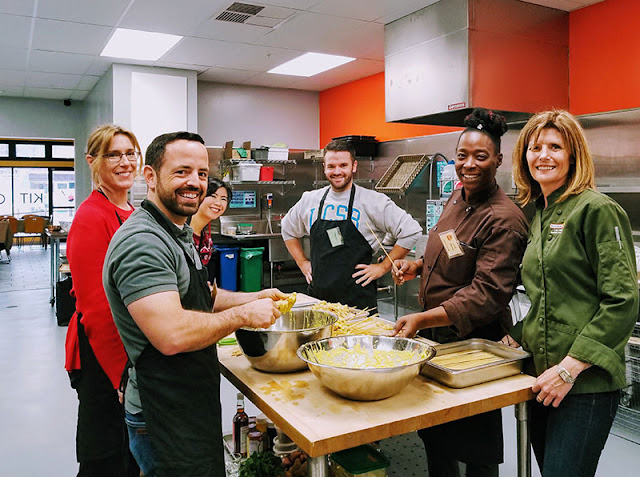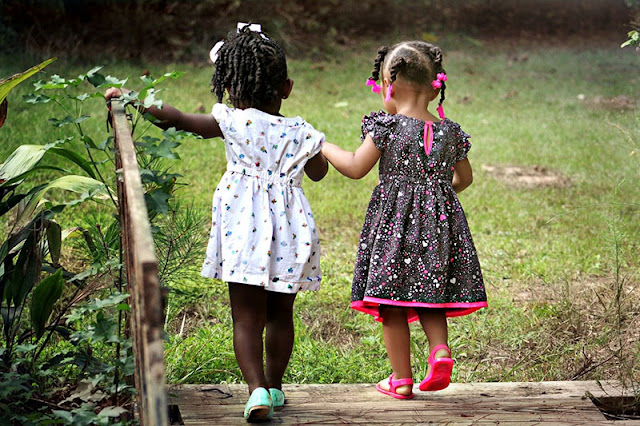
You don’t have to do the same tried and true Valentine’s Day date night or stay-in night. This year, try something new like a large group cooking class at Kitchen on Fire. Invite a friend, a lover, your office team, or go it alone and meet new people while creating and sharing a meal. Valentine’s Day is celebrated around the world in varying degrees, but at heart, it is the celebration of friendship.
How to Cook with Friends
Feasting, or gathering together in large groups for communal eating, has been around for centuries. Studies, like the University of Oxford’s Breaking Bread: the Functions of Social Eating, show the sharing of a meal with others increases social bonding and the feeling of wellbeing. Benefits include increased self-esteem, team building, and deeper interpersonal connections. Here are some ideas to bring everyone together.Host a Pot Luck Dinner Party:
Who doesn’t love a potluck? A laid-back dinner party that lets everyone relax and enjoy good friends and good food. Pick a theme or let everyone bring their favorite dish. Or, suggest everyone bring Grandma’s favorite recipe. This is sure to spark some great childhood stories celebrating family. Set up a buffet table or food stations then allow your guests to move around and mingle.Share the Love:
Invite a group of friends to volunteer at a food pantry or community kitchen, like Loaves & Fish. You and your friends will get to meet and interact with other volunteers and visitors. Instead of eating together, you will provide nourishment to others preparing and serving meals. The act of cooking, serving and eating with friends, volunteers, and visitors will make everyone feel happy and connected.Host a Cook-off:
Add a little friendly competition to your large group cooking class this year. A cook-off is a great way to bring different groups of friends together to have fun while breaking the ice. The dish chosen can set the theme for the evening. A signature cocktail can complement the dishes. Guests can bring their own wine too and cook side-by-side in the kitchen. Judging can be a blind taste test or have guests introduce and describe the dishes. You know your friends best, so choose what will be the most fun for the whole group.Make it a Team Effort:
Pick a recipe that makes a large quantity to share, like pasta sauce. Have your friends bring the ingredients, you supply the drinks, and everyone goes home with a delicious memory. Set up a designated spot for each task and let guests pick their work station. Teamwork always makes dicing and peeling more fun. Once you’ve finished cooking, invite your friends to sit and relax while enjoying a home-cooked meal. Don’t forget to send everyone home with a healthy portion to remember the night.FEATURED CLASSES FOR VALENTINE’S WEEKEND
Rather venture out instead? This Valentine’s weekend, Kitchen on Fire, is offering multiple cooking classes to help you cook the perfect meal with friends.Schedule of Classes
Couples Valentine’s Dinner: Kitchen on Fire ChefsBerkley and Oakland
Friday, Feb. 14, 2020 | 6:30 PM | 3hr
Sat, Feb 15, 2020, additional class - Oakland
*Pescatarian option available
Bourbon and Brunch: Chef Diema
Berkeley
Sat. February 15, 2020 | 12:00 PM | 3 hr
Cook Like a Restaurant Chef: Chef Mat Wertlieb
Oakland
Sun, Feb 16, 2020 | 5:00 PM | 3hr






